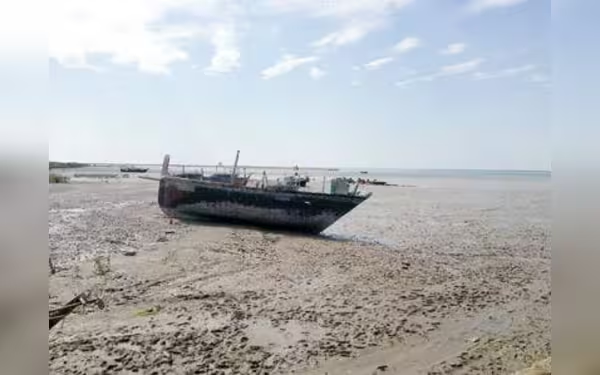Thursday, July 4, 2024 06:35 PM
Dr. Wazir Ali Karimi leads cyclone relief efforts
- Established medical camp for critical care in Taluka Jati
- Cyclone OA2 caused widespread destruction in Sindh coastline
- Fishermen communities in Thatta and Sujawal districts severely impacted
 Image Credits: nation_pk
Image Credits: nation_pkThe devastating impact of Cyclone OA2 on Sindh's coastal communities, highlighting challenges and the need for support and resources for a more resilient future.
In May 1999, Cyclone OA2 struck the Sindh coastline, particularly affecting Thatta and Badin districts. The cyclone led to widespread destruction, with over 6,500 individuals from coastal villages reported missing and presumed dead. Taluka Jati, now within Sujawal district, faced the brunt of the cyclone's fury, causing significant challenges for the local hospital's limited capacity.
Dr. Wazir Ali Karimi, the Medical Superintendent at Taluka Hospital Jati, along with dedicated staff and Pakistan Army rescue teams, established a medical camp to provide critical care to patients from the affected areas. The aftermath of the cyclone was grim, with bodies found in remote areas, highlighting the tragic impact on the fisherfolk in Thatta and Sujawal districts.
Aside from the human toll, the cyclone triggered environmental changes, leading to land erosion, loss of fish species, and submergence of agricultural land under seawater. The Indus delta suffered degradation, affecting local livelihoods significantly.
Twenty years later, residents of Union Council Kothi and Karmalak are still struggling to rebuild their lives. The lack of support from authorities has hindered the recovery process for the fishermen communities, prompting many to migrate to urban centers in search of better opportunities.
The impact of Cyclone OA2 on Sindh's coastal communities remains a stark reminder of the challenges faced by vulnerable populations in the wake of natural disasters. As we reflect on this tragic event, it is crucial for authorities to prioritize support and resources for the affected communities to ensure a more resilient future.













